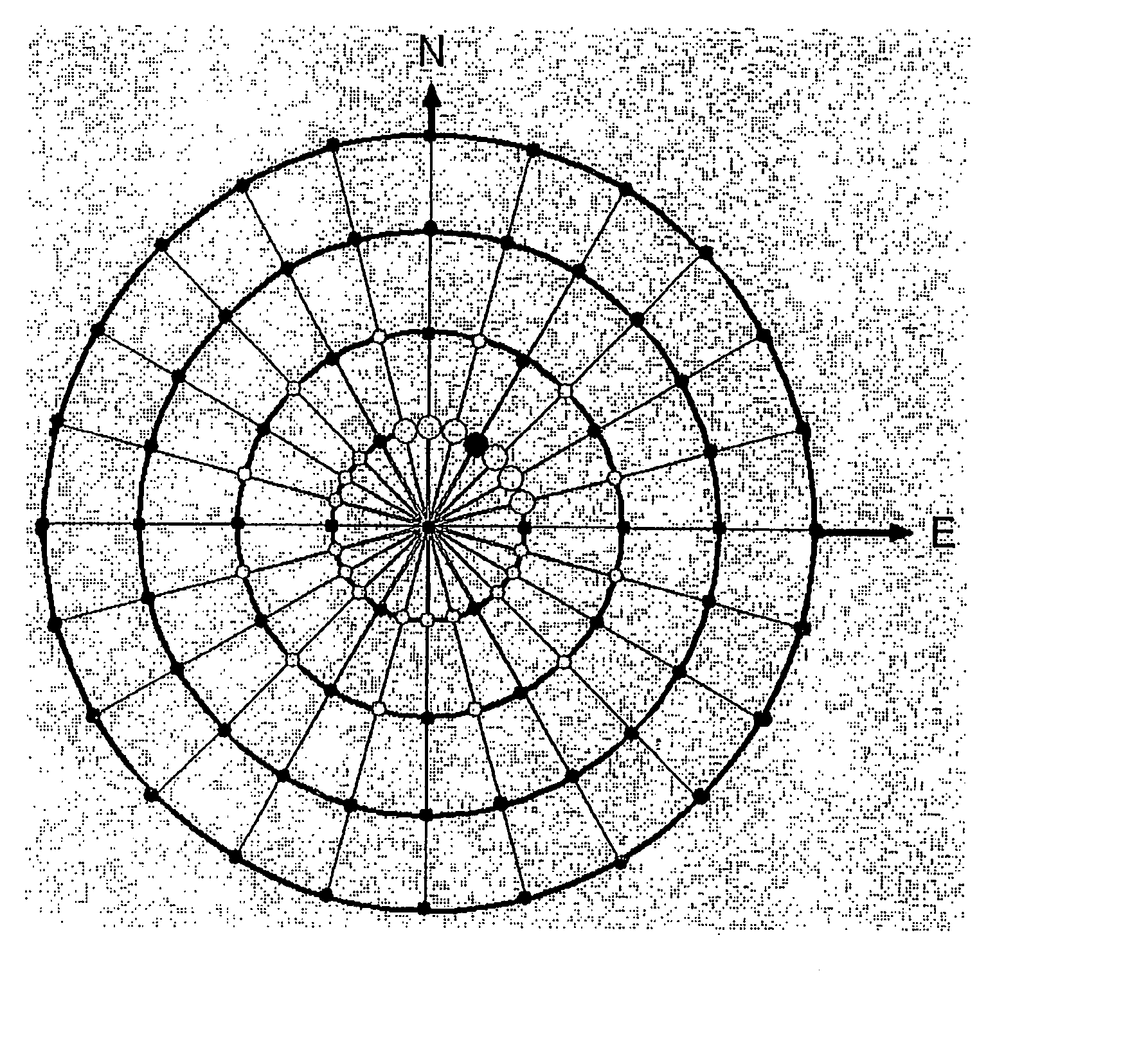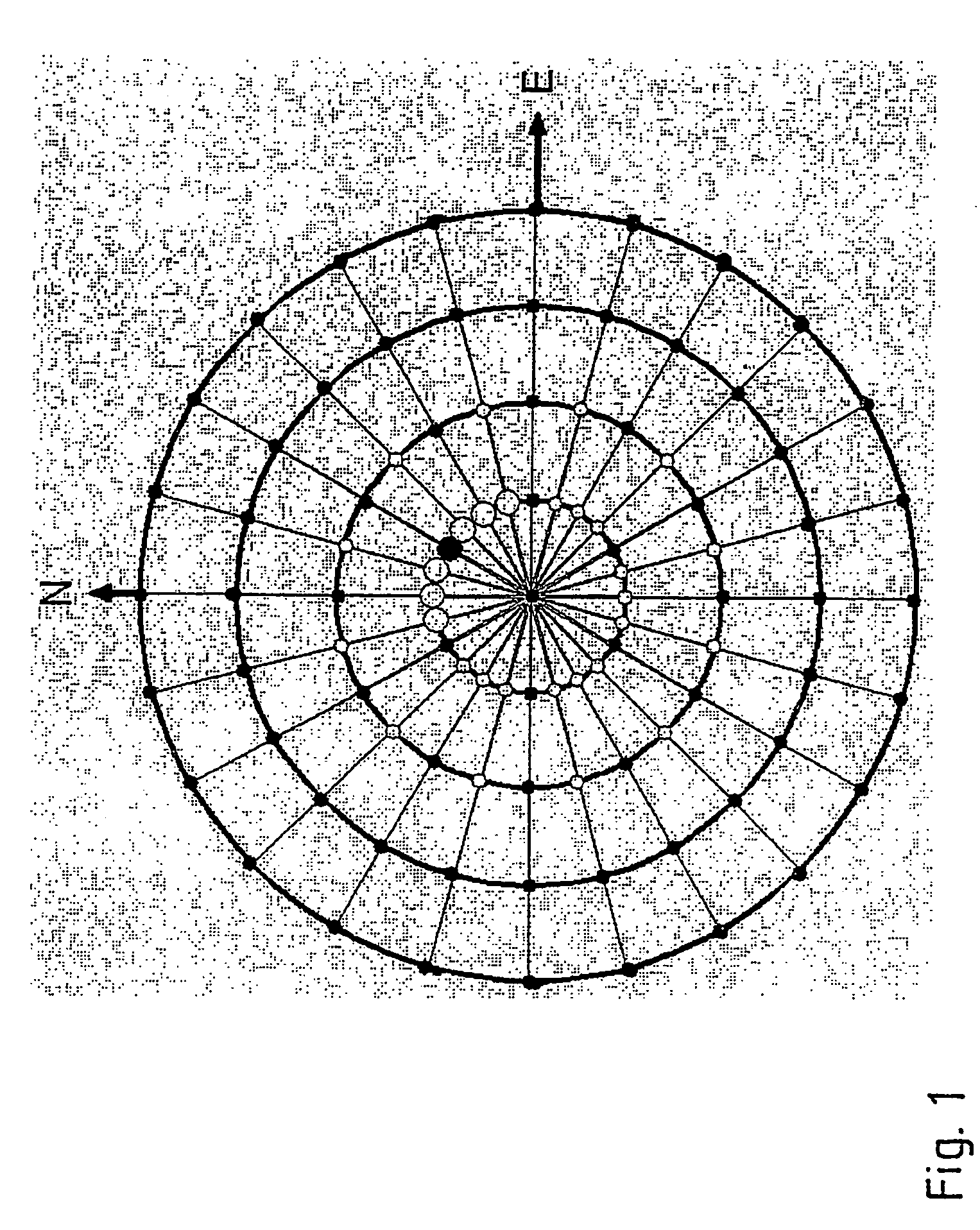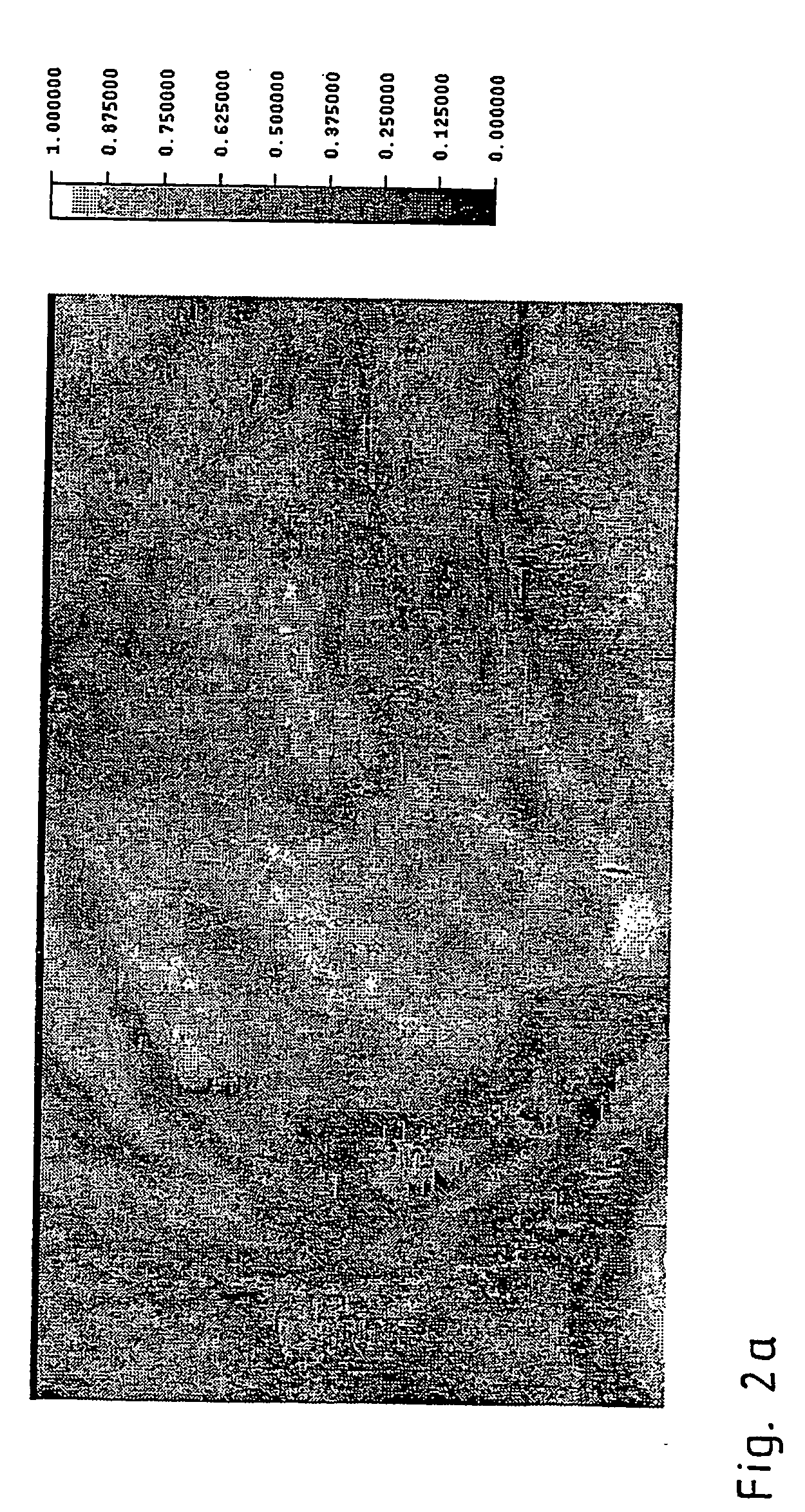Method for the determination of local similitude from seismic 3d measured data
a technology of measured data and local similitude, which is applied in the direction of geological measurements, complex mathematical operations, seismology, etc., can solve the problems of large computer resources and software, reducing resolution, and limitation of the comparison to neighbor traces that is not suited to detection
- Summary
- Abstract
- Description
- Claims
- Application Information
AI Technical Summary
Benefits of technology
Problems solved by technology
Method used
Image
Examples
Embodiment Construction
[0123] For a three-dimensional volume of seismic poststack data, a similarity volume was computed with help of the previously described invention. A weighted environment was defined by the Gaussian bell shaped exponential curve e.sup.-d.sup..sup.2, where d is a scaled distance according to equation (5b). A distance scaling according to a.sup.-1=7.5 .DELTA.u was used, with .DELTA.u being the average interval of the horizontal discretization in the seismic volume. Beyond a radius of 11.5 grid points around each analysis point, the weighting was set to the value 0.
[0124] The local similarity measurement in such an environment was performed with the weighted semblance according to equations (6b) and (10). The similarity measurements were executed in dipping environments. On principle, the dips were selected according to the scheme of FIG. 1. The spatial orientation is given by annotations N, denoting north, and E, denoting east. For each analysis position, the maximum similarity value t...
PUM
 Login to View More
Login to View More Abstract
Description
Claims
Application Information
 Login to View More
Login to View More - R&D
- Intellectual Property
- Life Sciences
- Materials
- Tech Scout
- Unparalleled Data Quality
- Higher Quality Content
- 60% Fewer Hallucinations
Browse by: Latest US Patents, China's latest patents, Technical Efficacy Thesaurus, Application Domain, Technology Topic, Popular Technical Reports.
© 2025 PatSnap. All rights reserved.Legal|Privacy policy|Modern Slavery Act Transparency Statement|Sitemap|About US| Contact US: help@patsnap.com



